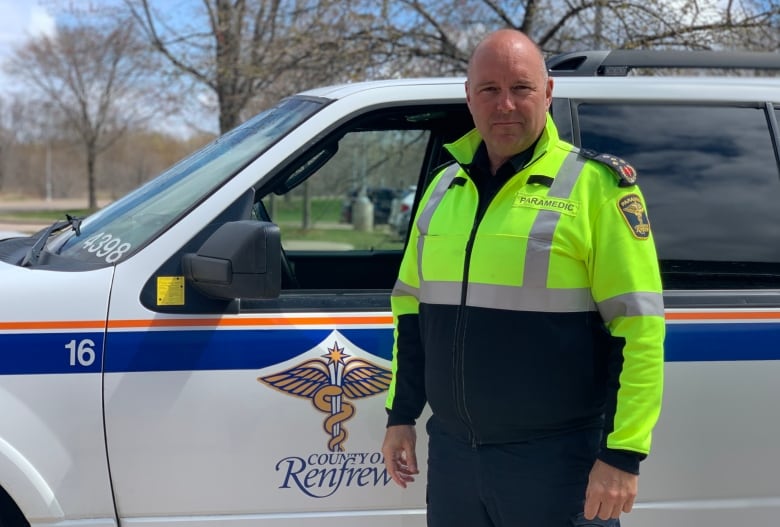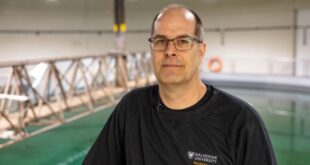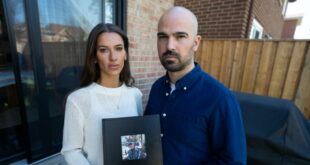Experts say team-based model is a starting point toward a permanent solution.

How do we solve the family doctor shortage?
Many Canadians still don’t have access to a family doctor. CBC’s Omar Dabaghi-Pacheco explores short-term and long-term solutions to the problem.
When it comes to Ontario’s family doctor shortage, the paramedic chief in Renfrew County thinks he’s found a cure with a hybrid model of care.
The model puts a family doctor just one phone call, and usually a few hours wait, away.
“This is actually a new door into the health-care system that is connected to all other parts,” said Michael Nolan, the architect of the eastern Ontario county’s latest foray into innovative health-care delivery.
It’s called the Renfrew County Virtual Triage Assessment Centre (VTAC), which started as a quick way for community paramedics to start testing some of the county’s roughly 100,000 residents during the COVID-19 pandemic.
Nearly three years and 80,000 visits later, the experiment recently received $3.2 million from the Ontario government with assurances money will continue for the long term, Nolan said.
VTAC is team-based care where anyone in the area who needs a doctor can call a 1-800 number to reach a medical receptionist, trained to help them figure out which health-care provider they can see in the shortest amount of time.
The receptionist will set up an appointment with one of dozens of VTAC doctors working remotely across Ontario. Next, a paramedic or nurse will either make a house call or meet them at a nearby clinic to perform the physical assessment for the virtual doctor.

Paramedics and nurses, using Bluetooth-connected medical instruments, become the eyes, ears and physical hands for a doctor, who watches the assessment on video.
“If they come in and they’re running a [temperature], and we listen to their lungs and it’s symptomatic of possible pneumonia, we can get a requisition drawn up and circumvent going through the [emergency department] for hours and hours,” said paramedic Sean Plunkett.
The doctor can then order an X-ray and issue a prescription.
The model sees paramedics free up doctors to see more patients and Nolan said most patients in the VTAC model can see a family doctor on the same day. Unlike a typical walk-in clinic, a patient’s health information follows them from doctor to doctor in future appointments until they can attain a permanent family doctor.
Dr. Jonathan Fitzsimon, the medical lead for the VTAC in Renfrew County, said unlike some Ontario communities there has been no challenge recruiting or retaining family doctors.
“The only reason we’ve been able to recruit a pool of doctors to do this long-term and maintain them is because it’s professionally rewarding work they enjoy,” said Fitzsimon.
“We feel we’ve been able to tap into an unused pool of talent. We’re not poaching anyone from another community.”
The pool of doctors include some who are semi-retired, others who have just obtained their medical certificate, and family doctors who offer to work some extra hours on top of their full-time job.

Not an ‘endpoint’, doctor says
Fitzsimon won’t label the VTAC a permanent solution to the shortage of family doctors.
“This isn’t the final sort of endpoint that we want to be at,” he said. “This isn’t … comprehensive team-based care. But it’s a bridge to that point, as a safety net.”
Fitzsimon estimates the program has saved the county about $2 million per year on health-care spending.
Those savings, plus the increased provincial funding and positive community feedback, proves the program is working and should be expanded to neighbouring towns and cities, Nolan said.
Medical researchers estimate more than 2.2 million Ontario residents don’t have a family doctor. Experts have said that leads to many people ignoring their health concerns until they worsen and require emergency care.
Nolan said VTAC is a “powerful tool” that solves this problem in the short term.

Team-based care is the future
There’s a consensus among medical experts that team-based care is the best way to address the family doctor shortage — some combination of nurses, physiotherapists, social workers, dietitians and other specialists to reduce the workload from a family doctor.
A survey conducted by the Canadian Medical Association (CMA) also found doctors believe pan-Canadian licensure — one medical licence to work anywhere in Canada — will help fill ongoing voids in care, including when doctors take vacation.
“When operating rooms run short because a surgeon isn’t available and an anesthesiologist isn’t available, those could potentially stay open because people can now migrate faster,” said Dr. Alika Lafontaine, president of the CMA.
Ontario and Canada as a whole should also look overseas for solutions, according to former federal health minister Jane Philpott, who is now dean of the faculty of medicine at Queen’s University in Kingston, Ont.
Philpott cited the U.K. model, the National Health System, as a starting point to re-imagine family health care. In this case, a patient is assigned a family doctor close to their residence instead of searching for one.
“We’re actually paying more than we need to and we’re spending our money on the expensive things that could be avoided if we actually had access to primary care,” said Philpott, who believes it will take another decade before everyone in Canada has access to a family doctor.
With one eye to the future, the other needs to focus on getting people the help they need now before the family medicine dilemma gets worse, said Nolan.
“It’s about saving the health and prosperity of Ontarians by being able to provide them an option where an option hasn’t existed ever before,” he said.

When it comes to Ontario’s family doctor shortage, the paramedic chief in Renfrew County thinks he’s found a cure with a hybrid model of care.
ABOUT THE AUTHOR
*****
Credit belongs to : www.cbc.ca
 Atin Ito First Filipino Community Newspaper in Ontario
Atin Ito First Filipino Community Newspaper in Ontario






